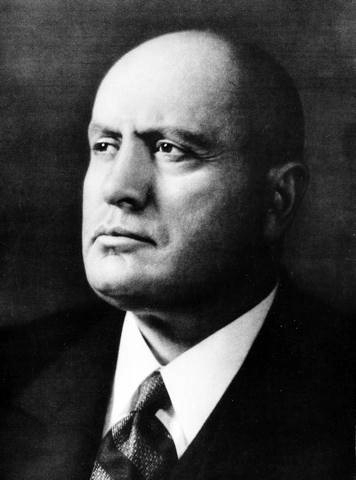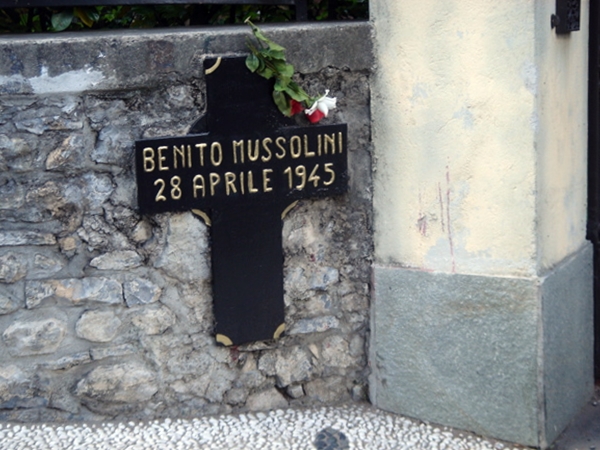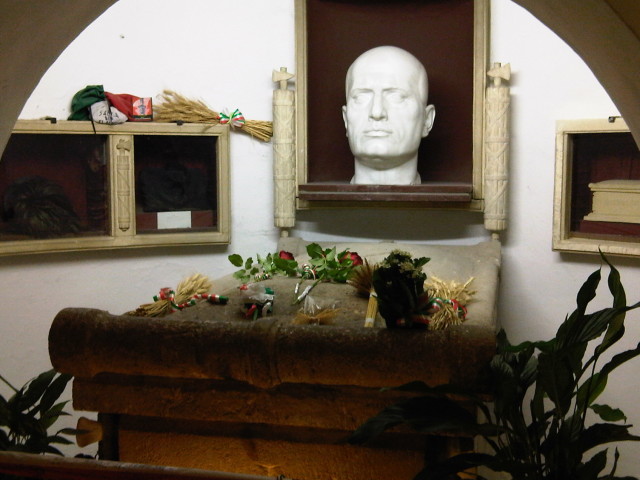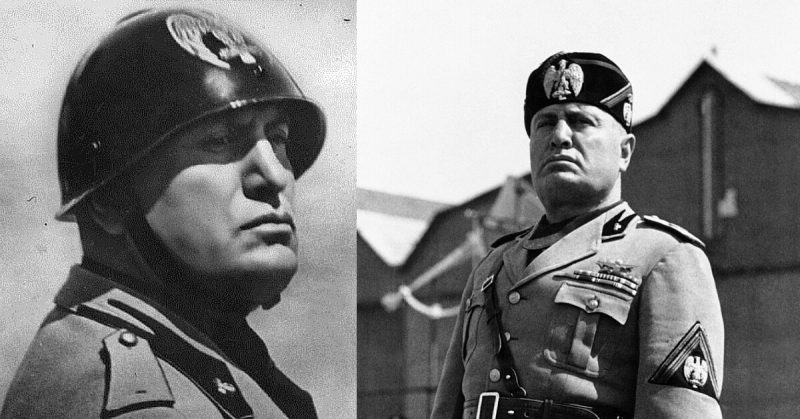On the 28th of April 1945, Benito Mussolini died. The leader of Fascist Italy and longest-ruling of the right-wing dictators who brought destruction to 20th century Europe, died in ignominy, executed on a rural road by his captors. It was a death that brought peace to many oppressed by the man known as Il Duce, and which brought controversy and conspiracy theories in its wake.
The Fall of Il Duce

Mussolini was one of the several far-right leaders who took control of their countries following the First World War. He sought to make Italy stronger, oppressing his own people and invading other countries to do so. He was so influential that the name of his Fascist party has since been adopted as a catch-all term for extreme right-wing politics based on racism, authoritarianism, and hate.
Though not the driving force behind the Second World War, he was drawn by ambition and ideology into an alliance with Nazi Germany, an alliance that invaded many countries.
As the tide of war turned, Italy was invaded, and in July 1943 disgruntled Italian politicians ousted Mussolini from power. He was imprisoned but then rescued by the Germans, who had invaded Italy when it made peace with the Allies.
The Germans installed Mussolini as leader of a puppet state in northern Italy. But a combination of Italian partisans and Allied armies gradually drove back the Germans, who could not commit more troops thanks to the Allied liberation of France and invasion of Germany.
With total defeat imminent, on the 25th of April 1945, Mussolini fled his base at Milan and headed north, hoping to reach neutral Switzerland.
Capture
On the 27th of April, Mussolini, and other Fascist leaders were travelling under the protection of a German convoy. Near the village of Drongo, communist partisans led by Pier Luigi Bellini delle Stelle and Urbano Lazzaro attacked the convoy, bringing it to a halt. 50 Fascist leaders and their families, including Mussolini and his mistress Claretta Petacci, were handed over by the Germans in return for safe passage, and taken as prisoners to Drongo.
At first, the partisans did not recognise Mussolini. The man they had was not the dynamic, charismatic leader who had run Italy for over twenty years. Instead, he was a broken, exhausted figure, listless and empty-eyed.
This area, around Lake Como, was still a war zone, and the partisans feared that the Germans might try to rescue Mussolini. That night, they took him and Petacci to the farm of the de Maria family, hoping to keep them hidden.
Who Gave the Order?
On the 25th of April, as Mussolini began his flight, a decree had been issued by the Comitato di Liberazione Nazionale Alta Italia (CLNAI), the partisan leadership. It declared that the Fascist leaders were to be punished with death for bringing oppression and destruction upon their country.
The question of who gave the order for Mussolini’s summary execution, rather than keeping him to face trial, is uncertain.
The Secretary-General of the Communist Party and deputy prime minister, Palmiro Togliatti, claimed that he gave the order on 26 April, saying that once captured and identified Mussolini should be killed. Prime Minister Ivanoe Bonomi claimed that this was done without government authorisation.
Luigi Longo, a senior Communist in Milan, gave two different accounts – one that the order came from CNLAI command, one that he and another CLNAI man took the decision.
Leo Valiani, the Action Party representative on the CLNAI, claimed that the decision was taken by him and other core CLNAI leaders on the night of 27 April.
Wherever the order originated, Longo sent two partisans, Walter Audisio and Aldo Lampredi, to Dongo to carry out the execution.
Mussolini’s Execution

There are also conflicting accounts of the execution. The most widely accepted came from the broadly similar stories of Audisio and Lampredi.
Early on 28 April, Audisio and Lampredi drove to Dongo. There they met with Bellini delle Stelle, who as commander of the local partisans had been responsible for the prisoners. Some sort of meeting or tribunal may or may not have taken place – accounts of this differs wildly.
Whatever discussions took place, Audisio and Lampredi then drove to the de Maria farm, along with a man Michele Moretti. They took Mussolini and Petacci from there to the village of Giulino de Mezzegra. Outside the Villa Belmonte, Mussolini and Petacci were ordered to stand against the wall. At 4.10pm, Audisio shot them to death with a submachine gun. His own gun having jammed, he borrowed Moretti’s for the execution.
Dealing with the Body

Following their execution, Mussolini and Petacci’s bodies were taken to Milan, along with those of other Fascist leaders. Many of the men captured along with Mussolini had been executed at Drongo, and their bodies were now put on display in a square where, a year earlier, partisans had been killed and their bodies displayed by the Fascist authorities.
The bodies were beaten and urinated on by the crowd, before being hung up by their feet – a traditional sign of the infamy of a criminal, but also a way of protecting the bodies from the crowd. They were later retrieved for autopsy by the Americans.
Initially buried in an unmarked grave in a cemetery north of Milan, Mussolini’s body was dug up by three Fascists in 1946 and kept hidden for four months.
After its retrieval, it was kept in secret until 1957, when Prime Minister Adone Zoli, reliant on far right support, agreed to its internment in the Mussolini family crypt.
The tomb has become a site of pilgrimage for neo-Fascists.
Controversy and Conspiracy Theories
Over a dozen different accounts exist of Mussolini’s death and the events leading to it. Theories range from the action of a covert British operative to a fake execution hiding a suicide. But the publication in 1996 of Lampredi’s previously secret account, which largely matches Audisio’s, has led most credible historians to accept their account.
